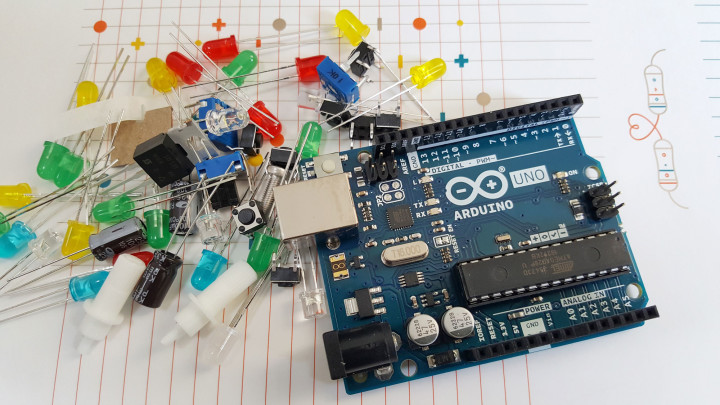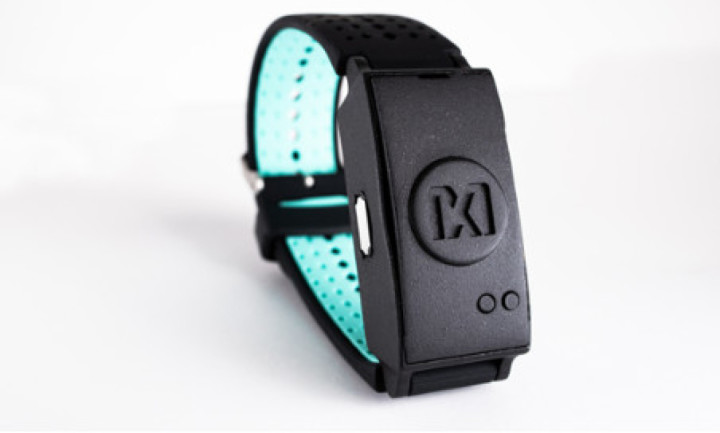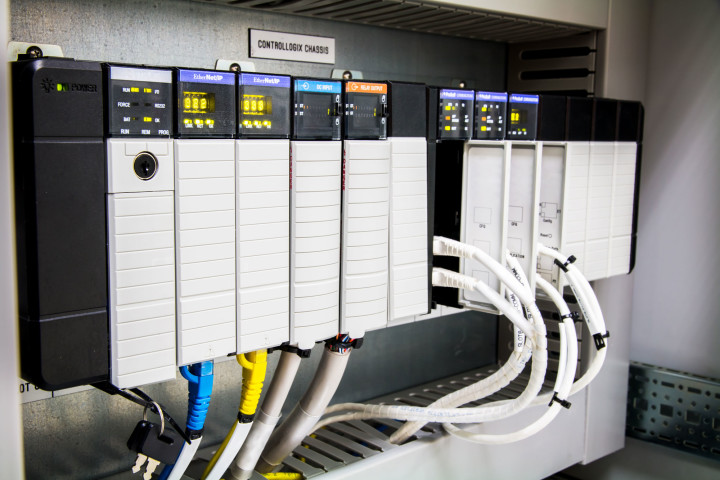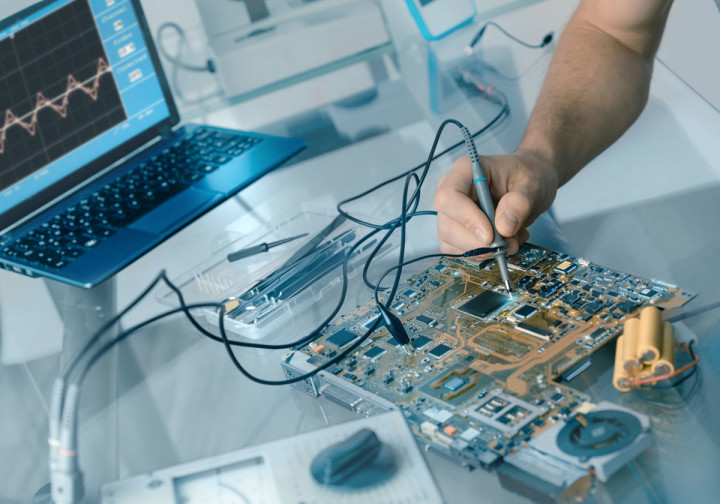Development Boards: Past, Present, and Posterity
on
What Is a Development Board?
At the outset, a clear definition of what is meant by a development board and how they differ from a single-board computer (SBC) is required. A development board is typically created by the manufacturer of a microcontroller to highlight its features (although the term is now also often applied to other types of components, as well). A microcontroller is an integrated circuit that contains a processor, some RAM, flash storage and has I/O functionality that allows it to interface with the real world. It effectively functions like a miniature computer housed in a single package, its purpose being to provide developers with a convenient way to interface with it and control external components like lights, small motors, etc. An SBC also provides this functionality with the main difference being that the CPU, RAM, and storage are each contained within separate ICs on the board, and interfaces allow it to be connected to a keyboard and/or display.
The microprocessor on an SBC requires an operating system, whereas a microcontroller is managed using an integrated development environment (IDE) provided by the manufacturer. In many cases, manufacturers now create development boards that include a microcontroller but whose main purpose is not to demonstrate the features of the microcontroller itself but those of sensors or other integrated circuits to which it interfaces. These are referred to as ‘demo boards,’ ‘evaluation kits,’ or — if they have been assembled to enable the collection of parts to perform a tangible purpose — ‘reference designs.’
The purpose of some boards is not primarily for hardware development, but to provide access to the real-world data that software developers require to create and refine algorithms needed for artificial intelligence and machine learning applications. While these may not conform to the original definition and purpose of a ‘development board,’ these are now collectively understood to refer to any piece of hardware that can be used in the software and hardware development of new electronic products.
Past
The first microcontroller development board to capture the attention of the engineering community was released in 2006. This prototyping platform, which later became known as Arduino (Figure 1) was quickly adopted by a new category of electronic designers that included enthusiasts, hobbyists, and DIY engineers. Arduino laid the foundations for the commercial success of later SBCs and microcontroller-based platforms and was soon followed in 2008 by BeagleBoard, which provided engineers with a low-cost, open-source community-supported development platform. 2012 saw the release of the Raspberry Pi — the first modern single-board computer. Like BeagleBoard, it was conceived as an educational platform intended to provide a low-cost way in which students could use to learn how to write program code. The appeal of Raspberry Pi was much wider than students alone, and it was quickly adopted by amateur hobbyists and professional engineers alike.

Present
Today, there are two main categories of SBCs — proprietary and open-source. Proprietary SBCs are typically designed for use in end applications and have been subjected to the same type of testing and quality assurance as other end products. They are either integrated into electronic equipment or installed in a rack-mount configuration. Open-source SBCs provide users with access to their hardware design and layout and to any source code that they use. This allows users to quickly and easily learn how the software and hardware operates and then adopt the design to match their requirements.
Today, development boards and SBCs come with a wide variety of processor types. These range from x86-based processors within the traditional PC space (AMD and Intel) to ARM processors used in industrial and mobile applications. Linux and its derivatives (Ubuntu, Fedora, Debian, etc.), Android, and Windows CE are the operating systems most used on SBCs. Microcontroller development boards do not require an operating system and are programmed via an IDE provided by the manufacturer. Microcontroller development boards and SBCs have both evolved to include wireless connectivity (Wi-Fi, Bluetooth), and the most recent audio and video interfaces, meaning that some SBCs now have features equivalent to those found in many PCs and tablets.
Posterity: Development Boards Become the Final Product
Traditionally, manufacturers created development tools with the intention of using them as a marketing aid that could improve the likelihood of selling their microcontrollers to prospective customers (often referred to as ‘Design-in’ within the industry). They hoped that by minimizing the amount of work required by design engineers to get a part up and running in the lab and by making it easy for them to access and investigate its features, it would make them more likely to choose their microcontroller and ancillary parts for use in initial product prototyping and would eventually lead to higher volume orders if the part was chosen for use in a mass production. For products where the difference in the technical specifications between parts from different suppliers is negligible, this is a prudent approach. However, for manufacturers, this approach has been, in some respects, a victim of its own success. They realized that they must continue to reduce the amount of work required for an engineer to engage with their products, so the development board has become the key differentiator — especially for products that are broadly similar to those of their competitors.
The expectations of design engineers has risen such that, even for parts that have a clearly identifiable competitive advantage (for example, in power or speed) they still expect the associated development boards to have plug-and-play levels of accessibility.
Manufacturers have further improved their value proposition by offering reference designs consisting of a microcontroller and other integrated circuits (typically sensors). Initially, these were intended to provide a guide for how devices could be interconnected to emulate the electrical functionality of a final product, with little focus on their form factor, size of the design, or ease of manufacture. However, some manufacturers have taken reference designs to the next level by creating fully-fledged product prototypes and even completely viable products.
The health sensor platform (HSP) reference designs by Maxim Integrated (now part of Analog Devices) can be used as an example in charting this evolution. The initial version of these reference designs was a small development board that features an assortment of sensors (temperature, pressure, accelerometer, biopotential, etc.) suitable for use in health and fitness applications and which could be configured using a microcontroller. Its successors, HSP2.0 and HSP3.0, had form factors that allowed them to be wrist-worn, and they look much like other wearables available on the market (Figure 2).

This allowed developers to evaluate the functionality of their sensors in real-world scenarios. Importantly, these designs also provided software developers with free access to sensor readings (information not easily accessible from other health and fitness wearables). The purpose of this approach was to enable the development of machine learning and artificial intelligence algorithms that would add value to the application.
By demonstrating how their hardware facilitates easy access to data, Maxim hoped that product developers would choose some (or all) of the ICs in Maxim’s sensor solution for use in products. Maxim extended this approach as far as to develop the MAX HEALTH BAND (wrist) and MAX ECG MONITOR (chest strap), both fully designed and constructed to be fully viable wearable health and fitness devices. While they were not intended for sale directly to consumers, businesses could enter into an agreement with Maxim to have these products branded under their own label in return for a royalty payment.
Offering a fully functioning product in this way, where all the development work had already been done, has the potential to appeal to a new and broader non-technical business customer base. Nordic Semiconductor’s Thingy:91 is another example of a development platform where hardware has become almost incidental to the task of providing developers with access to the data they need to develop the software and algorithms that allow the intrinsic value of the hardware to be realized (but, in so doing, conveniently make them the obvious choice for use in new product designs that leverage these algorithms). It is likely that this approach will be adopted by even more manufacturers in the future.
Increased Use of Development Boards in Industrial ProductsAdapting development boards and SBCs for use in commercial products has become increasingly common, but another emerging trend is the use of boards in lower-volume but higher-value applications, such as in industrial end-products such as programmable logic controllers (Figure 3), which are subject to more exacting standards than their commercial equivalents.

Testing Boards for Industrial Applications
Many of today’s SBCs have inherently become fully verified designs because the parts they contain were originally developed for use in end-products and have therefore been tested and quality-assured. This is also because open-source designs are constantly reviewed by an army of competent designers and programmers who update and appraise the boards and the software that they use.
Testing of SBC boards is now performed through high-quality design and manufacturing firms, and they are subjected to the same rigorous degree of quality control as any other end products, thus allowing them even to achieve CE or FCC certifications. This test flow can easily be extended to meet the requirements of industrial products.
On the other hand, microcontroller development boards supplied by manufacturers or third parties, while usually suitable for use in commerical products, are not typically subjected to the same stringent levels of testing required for industrial products. This means that manufacturers do not currently recommend them for immediate use (in their current guise) in these applications.
While some boards include industrial grade components, they are more often only of commercial grade, with the boards being designed to operate at room temperature. Prototypes of development boards typically undergo testing at room temperature for several days or weeks, but this varies depending on the manufacturer, as there are no set standards. The primary quality requirement for manufacturers is that their boards operate reliably at room temperature, and therefore purchasers should be aware that it is unlikely that these boards have been tested at extremes of temperature or humidity. They also aren’t normally tested to survive the stresses associated with intense vibration or shock.
As a result, the main objective when determining which development board to use in an industrial application is to reduce risk: The board components must be of the proper temperature grade. It also makes sense to stress test several boards simultaneously at high temperature for a period of days. Similarly, if planning to use a development board in a product that will experience high humidity, the boards must be evaluated under comparable conditions. Where a board is intended for use in a high vibration application, then it should be mounted in a test frame and vibration tested.
Conclusion
SBCs and microcontroller development boards provide small companies with a convenient way to bring their designs to market quickly without the expense of new hardware development. The boards allow them to focus on software innovation and increasingly on the development of machine learning and artificial intelligence algorithms. SBCs and development boards have broadened their remit well beyond that which was originally envisioned for them, and they have made a real impact on the recent history of the electronics industry. They continue to become more powerful, intelligent, and responsive, while remaining easily accessible to both professional engineers and electronics enthusiasts.



Discussion (0 comments)